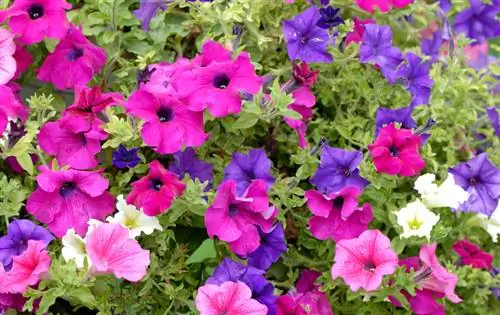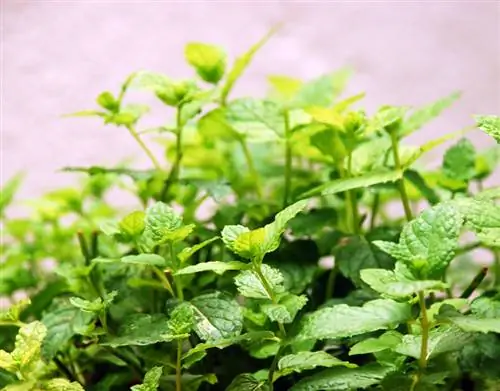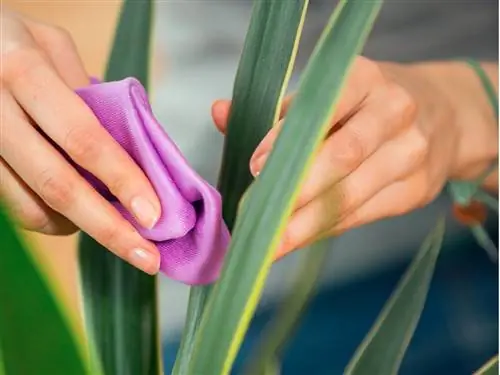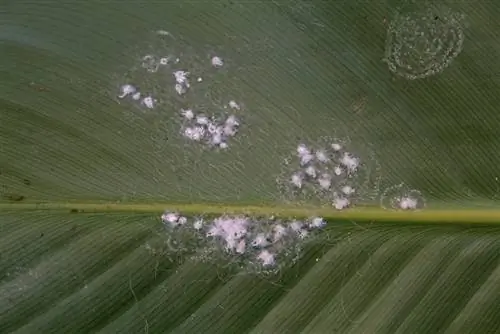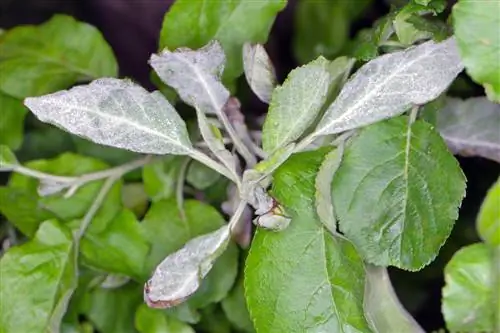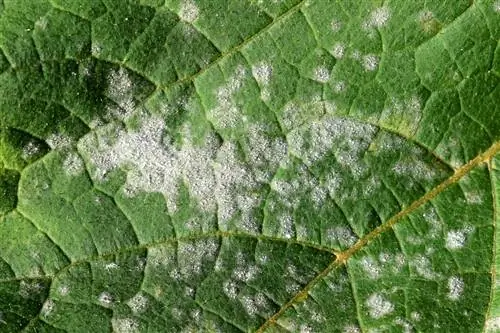- Author admin [email protected].
- Public 2023-12-16 16:46.
- Last modified 2025-01-23 11:20.
Not only petunias, but also many other plants in the garden can sometimes show a quickly spreading, white coating. Since this is a fungal disease that has immense damage to plant he alth, appropriate preventative and control measures should be taken as part of petunia care.
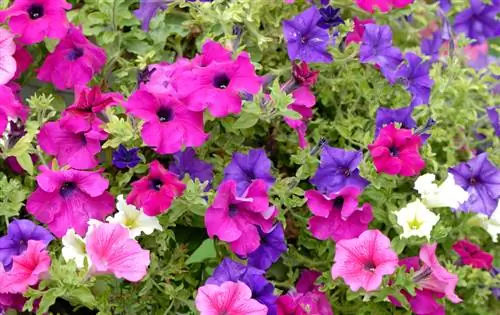
What causes a white coating on petunias?
A white coating on petunias can be caused by fungal diseases such as powdery mildew or downy mildew. To combat the infestation, infected areas should be removed, the plants sprayed with horsetail broth or treated with a milk-water mixture. Appropriate site conditions and care help prevent mildew.
Location and care for less susceptible petunias
Petunias originally come from natural areas in South America and thrive particularly well in warm, sunny locations. However, uncovered locations in the garden can pose problems for the popular balcony plant due to the often regular rainfall in this country. If lush hanging petunias are very close together, they have difficulty drying after rainfall, which promotes some fungal diseases. In addition, both powdery mildew and downy mildew can spread particularly easily in the garden or across the entire balcony if the plants are very close together, as the fungal spores then only have to overcome short distances.
Downy mildew
Downy mildew can be distinguished from powdery mildew by the fact that the white coating on the plants can mainly be observed on the undersides of the leaves. At the same time, yellow and brown spots appear on the tops of the leaves until the leaves eventually wither completely. Downy mildew occurs primarily when there is too much moisture, which can become a problem in rainy summers and in poorly protected petunia locations. For any type of mildew, small infested areas should be cut out and removed as early as possible so that further spread can be stopped or at least contained. Regular checks are necessary, even if you are staying indoors over the winter.
Powdery mildew
With powdery mildew, the fungus, visible as a white coating, spreads mainly on the upper sides of the petunia leaves, but also attacks all other parts of the plant. Powdery mildew is favored by the alternation of wet periods and dry phases. It can therefore be prevented by cultivating the petunias under cover and watering them sufficiently during dry periods. The following applies to the treatment of both types of mildew:
- Cut out affected areas if possible
- if possible, dispose of the removed material with household waste
- spray the plants with a broth made from horsetails
Spraying the affected areas with a mixture of 9 parts water and one part commercial milk also helps.
Tip
The white coating of powdery mildew is not only a problem for petunias, the dangerous fungus can also spread to other plants in the garden such as cucumbers, salsify and dahlias.

